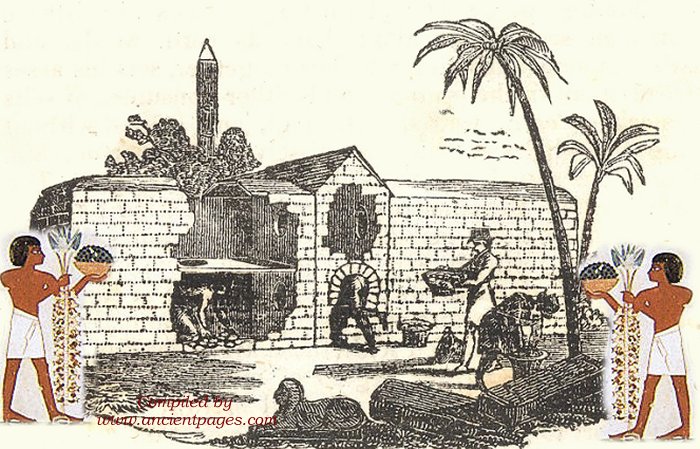Ancient Egyptians Invented World’s Oldest Egg Ovens And They Are Still In Use
Jan Bartek - AncientPages.com - The ancient Egyptian egg ovens are an excellent example demonstrating one should not underestimate how clever our ancestors were.
About 2,000 years ago, Egyptians came up with the incredible idea of producing enormous eggs. They constructed an egg incubator that could produce as many as 4,500 fertilized eggs in just two or three weeks!
The ancient Egyptian mud ovens were designed to replicate the conditions under a broody hen, and the invention worked perfectly. Today, considered the world's oldest man-made incubators, this ancient hatching system was using artificial heat. The largest egg oven had a capacity of 80,000 eggs.
Ancient Egyptians were very secretive with their egg ovens, but the technology was long kept secret. Still, knowledge of this invention spread to neighboring lands. Some curious scholars wanted to see whether the ancient Egyptian egg incubators were as incredible as they were said to be.
Diodorus Siculus ( 90 B.C – 30 B.C), a Greek historian known for his universal history Bibliotheca Historica was so impressed with the Egyptian egg ovens that he described the technology in his compendium Library of History.
"The most astonishing fact is that, because of their unusual application to such matters, the men [in Egypt] who have charge of poultry and geese, in addition to producing them in the natural way known to all mankind, raise them by their own hands, by virtue of a skill peculiar to them, in numbers beyond telling," Diodorus Siculus stated in his ancient work.
Aristotle and Diodorus were equally impressed with the egg incubators and described them as ingenious.
"Traverse section and perspective elevation of an Egyptian Egg-oven." Published in "The Penny Magazine", Volume II, Number 87, August 10, 1833. Credit: Public Domain
The Irish friar Simon Fitzsimons who visited Egypt, said the egg ovens were supernatural.
"Also in Cairo, outside the Gate and almost immediately to the right … there is a long narrow house in which chickens are generated by fire from hen eggs, without cocks and hens, and in such numbers that they cannot be numbered,"
Fitzsimons said, referring to the Egyptian egg incubators.
The fact that ancient Egyptians were unwilling to share their technological secrets made it challenging to create a similar egg incubator, but many tried.
One of the best accurate descriptions of the Egyptian egg ovens comes from the Frenchman René-Antoine Ferchault de Réamur who visited the country in 1750 and described the mega incubators in his book “Art de faire éclorre et d’élever en toute saison des oisseaux” (1751).
Réaumur wrote that the people working in the ovens were almost like a caste and came from the same village and region: Bermé in the Nile Delta. One man was enough to operate a hatchery, which was active for six months in succession, for eight hatching rounds of incubated chicken eggs. The workers from Bermé learned this art handed down from father to son.
It was a heated brick structure, formed by a central corridor with openings, which gave access on both sides to many compartments in two tiers – an average of 5 per side –each of which was laying 4500 eggs on the ground floor. The upper and lower chambers communicated with the corridor through an opening that allowed access to a man.
In the lower chamber were the eggs, arranged on mats or tow, and communicated with the upper chamber through a central opening whose dimensions are such as to allow the heat from above to reach the eggs in the incubation chamber. In the upper room, in a peripheral groove, cow dung or dromedary dung was burnt, dried, mixed with straw, and then compressed. Thus, a smoldering fire was obtained, which was lit twice daily, morning and evening, and mats were applied to half of the vent hole of the upper chamber. As a result, the hot air was forced to pass through the corridor.
Every day the eggs were turned, transferred to any other point warmer or cooler when needed, and partly transferred into the upper chamber when the fire was no longer lit. The man in charge of the incubator was such an expert that he did not need a thermometer – although they were nonexistent. The temperature of the eggs was checked by the egg against the cheek or against an eyelid. Two-thirds of the incubated eggs hatched." 1
Today, there are about 200 such egg ovens used in Egyptian rural areas. Incredibly, the technology invented 2,000 years ago has passed the test of time!
Written by Jan Bartek - AncientPages.com Staff Writer
Updated on December 28, 2022
Copyright © AncientPages.com All rights reserved. This material may not be published, broadcast, rewritten or redistributed in whole or part without the express written permission of AncientPages.com
Expand for references- Elio Corti, Elly Vogelaar – The Oldest Hatcheries Are Still In Use - aviculture-europe.nl
- Wikipedia
More From Ancient Pages
-
 Neanderthals Had More Children And Lived In Smaller Groups Than Was Previously Thought
Archaeology | May 28, 2019
Neanderthals Had More Children And Lived In Smaller Groups Than Was Previously Thought
Archaeology | May 28, 2019 -
 Forgotten And Overgrown Step Pyramid Of Koh Ker – Ancient Memory Of The Khmer Empire
Featured Stories | Apr 19, 2017
Forgotten And Overgrown Step Pyramid Of Koh Ker – Ancient Memory Of The Khmer Empire
Featured Stories | Apr 19, 2017 -
 Mysterious Pre-Celtic Civilization Who Came To Ireland From An Unknown Land
Featured Stories | Aug 13, 2024
Mysterious Pre-Celtic Civilization Who Came To Ireland From An Unknown Land
Featured Stories | Aug 13, 2024 -
 Legend Of Ancient Princess Thone Pan Hla Who Is Believed To Haunt Pyay In Myanmar
Featured Stories | Aug 2, 2016
Legend Of Ancient Princess Thone Pan Hla Who Is Believed To Haunt Pyay In Myanmar
Featured Stories | Aug 2, 2016 -
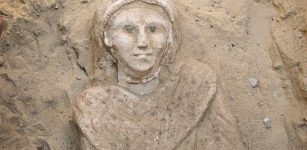 Curious Golden Figurine Of Female Dwarf Is A Puzzle
Archaeology | Feb 16, 2014
Curious Golden Figurine Of Female Dwarf Is A Puzzle
Archaeology | Feb 16, 2014 -
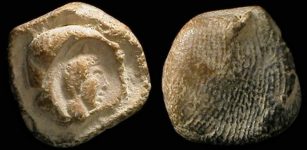 Fascinating Ancient History Of Fingerprints
Featured Stories | Jul 7, 2022
Fascinating Ancient History Of Fingerprints
Featured Stories | Jul 7, 2022 -
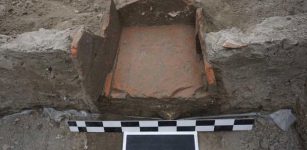 Ancient ‘Refrigerator’ And Unique Coins Discovered In Roman Military Camp In Bulgaria
Archaeology | Oct 3, 2022
Ancient ‘Refrigerator’ And Unique Coins Discovered In Roman Military Camp In Bulgaria
Archaeology | Oct 3, 2022 -
 The Hidden Face Of The Elusive Master
Ancient Mysteries | Jun 8, 2018
The Hidden Face Of The Elusive Master
Ancient Mysteries | Jun 8, 2018 -
 Belenus: Mighty Gaulish God Of Light Often Associated With Lugh And Apollo
Celtic Mythology | Feb 6, 2020
Belenus: Mighty Gaulish God Of Light Often Associated With Lugh And Apollo
Celtic Mythology | Feb 6, 2020 -
 Evidence Of Legendary Ancient Great Flood In China May Re-Write History
Chinese Mythology | Aug 5, 2016
Evidence Of Legendary Ancient Great Flood In China May Re-Write History
Chinese Mythology | Aug 5, 2016 -
 Sarcophagus Of Pharaoh Ramesses II Found In Abydos, Egypt
Archaeology | May 29, 2024
Sarcophagus Of Pharaoh Ramesses II Found In Abydos, Egypt
Archaeology | May 29, 2024 -
 AI Discovers Hundreds Of Unusual Nazca Geoglyphs In The Desert
Places | Oct 7, 2024
AI Discovers Hundreds Of Unusual Nazca Geoglyphs In The Desert
Places | Oct 7, 2024 -
 Could Aztec Innovative ‘Chinampas’ – ‘Floating Islands’ Help Modern Farmers?
Archaeology | Nov 4, 2019
Could Aztec Innovative ‘Chinampas’ – ‘Floating Islands’ Help Modern Farmers?
Archaeology | Nov 4, 2019 -
 Horrifying Flying Head That Terrorized The Iroquois
Featured Stories | Sep 17, 2019
Horrifying Flying Head That Terrorized The Iroquois
Featured Stories | Sep 17, 2019 -
 Did Lead Poisoning Cause The Fall Of The Roman Empire?
Archaeology | Oct 24, 2017
Did Lead Poisoning Cause The Fall Of The Roman Empire?
Archaeology | Oct 24, 2017 -
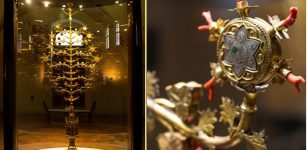 Missing Pieces Of The Magnificent Golden Tree Of Lucignano Discovered
Archaeology | Nov 6, 2023
Missing Pieces Of The Magnificent Golden Tree Of Lucignano Discovered
Archaeology | Nov 6, 2023 -
 Scientific Disagreement Over The Bronze Age Tin Ingots From The Uluburun Shipwreck
Archaeology | Sep 25, 2023
Scientific Disagreement Over The Bronze Age Tin Ingots From The Uluburun Shipwreck
Archaeology | Sep 25, 2023 -
 Celtic Valhalla And Sacred Wells – Magic Of Invisible Worlds
Celtic Mythology | Nov 17, 2021
Celtic Valhalla And Sacred Wells – Magic Of Invisible Worlds
Celtic Mythology | Nov 17, 2021 -
 Cimmerians – Ancient People Searching For A Home
Civilizations | Feb 11, 2019
Cimmerians – Ancient People Searching For A Home
Civilizations | Feb 11, 2019 -
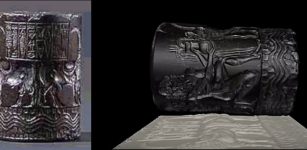 Sharkalishharri Cylinder Seal From The Fifth King Akkad Dynasty
Artifacts | Feb 14, 2016
Sharkalishharri Cylinder Seal From The Fifth King Akkad Dynasty
Artifacts | Feb 14, 2016

